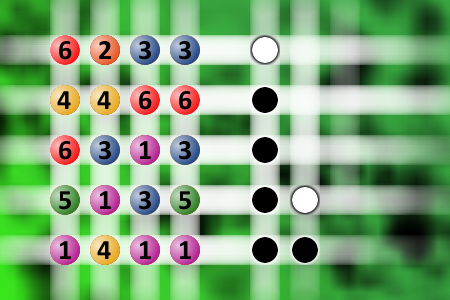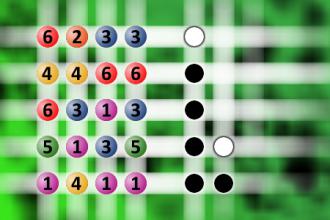Which is a winning combination of digits?
The computer chose a secret code (sequence of 4 digits from 1 to 6). Your goal is to find that code. Black circles indicate the number of hits on the right spot. White circles indicate the number of hits on the wrong spot.Correct answers: 3
#brainteasers #mastermind

Ladies Restroom
This bartender is in a bar, when this really hot chick walks up and says in a sexy seductive voice, “May I please speak to your manager?” He says, “Not right now, is there anything I can help you with?” She replies, “I don't know if your the man to talk to…its kind of personal…” Thinking he might get lucky, he goes, “I'm pretty sure I can handle your problem, miss.” She then looks at him with a smile, and puts two of her fingers in his mouth…and he begins sucking them, thinking “I'm in!!!” She goes, “Can you give the manager something for me?” The bartender nods…yes. “Tell him there's no toilet paper in the ladies restroom.”

